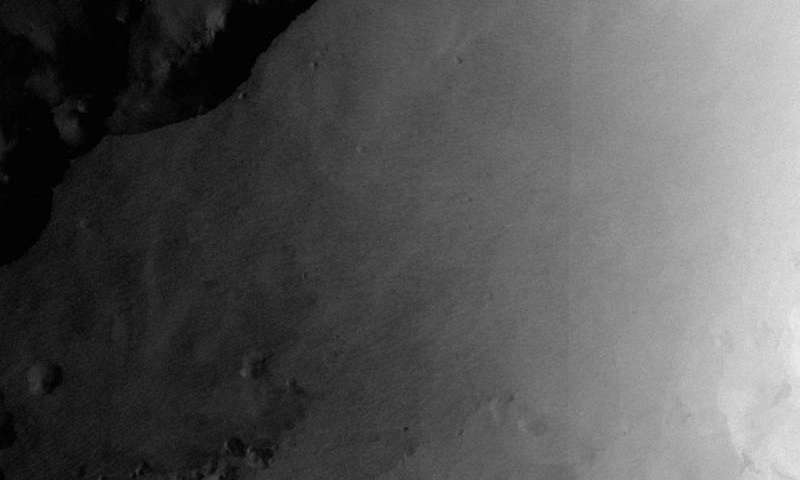First laser images sent via the European Data Relay System
ESA unveiled the first Sentinel-1 satellite images sent via the European Data Relay System's world-leading laser technology in high orbit. The two images were taken by the radar on the Copernicus Sentinel-1A over La Reunion Island and its coastal area. The first was scanned in a high-resolution mode, the second in a wide-swath mode that provides broad coverage of surrounding waters, and used in particular for maritime surveillance.
Sentinel-1A, sweeping around the globe at 28 000 km/h, transmitted the images to the EDRS-A node in geostationary orbit via a laser beam at 600 Mbit/s. The laser terminal is capable of working at 1.8 Gbit/s, allowing EDRS to relay up to 50 TB a day. EDRS immediately beamed the data down to Europe.
The transfer between the two satellites was fully automated: EDRS connected to Sentinel from more than 35 000 km away, locking on to the laser terminal and holding that link until transmission was completed.
The German Space Operations Center in Oberpfaffenhofen, Germany, tasked by the Mission Operating Center of Airbus Defence and Space in Ottobrunn, received the raw Sentinel-1A data at its station in Weilheim, Germany. They were then passed to the ESA-managed Sentinel-1 ground segment, where they were processed to generate the final products.
EDRS will dramatically improve access to more urgent and potentially life-saving coverage from space than ever before.
Satellites like the Sentinels can help to survey areas struck by natural disasters. When the situation on the ground is changing rapidly, hours-old satellite information is of little use to rescue teams. EDRS will allow access to time-critical data acquired around the world.
EDRS will help in disaster relief as well as for operational monitoring services like maritime surveillance by relaying the data as quickly as possible to Europe, thanks to its network of ground stations like the one in Oberpfaffenhofen.
Magali Vaissiere, ESA Director of Telecommunications and Integrated Applications, said at the Berlin Airshow today, "With today's first link, EDRS is close to becoming operational, providing services to the Copernicus Sentinel Satellites for the European Commission.

Sentinel-1A radar satellite test image taken in the early hours of 31 May 2016, recorded and relayed later that morning to Earth by EDRS-A on 31 May 2016 via laser. The image covers the island of La Reunion and surrounding waters, and was acquired in ‘Extra Wide Swath’ mode, suitable for maritime surveillance. Credit: Copernicus Sentinel data (2016), processed by ESA
Volker Liebig, ESA Director of Earth Observation Programmes, stated: "The Sentinels are the anchor customer of the new commercial EDRS service and the Copernicus system wins new downlink flexibility. So we have a real win-win situation."
"SpaceDataHighway is no longer science fiction," noted Evert Dudok of Airbus Defence and Space. "It will revolutionise satellite communications, and help to keep Europe's space industry at the forefront of technology and innovative services."
For Sentinel-1, EDRS adds flexibility, increasing the availability of products to users. It will also allow fast downlink of data acquired outside of Europe, helping services requiring products in real time, as well as in emergency and crisis situations.
The SpaceDataHighway is a public–private partnership between ESA and Airbus Defence and Space. The DLR German Aerospace Center funded the development of the cutting-edge laser technology that forms the backbone of the system.
The first node, EDRS-A, was launched on January 29th as a hosted payload on the Eutelsat-9B satellite. The second, the dedicated EDRS-C satellite, will be launched in 2017.
The European Commission's Copernicus Sentinel satellites are the first users of the EDRS service.
ESA is planning the GlobeNet programme to extend EDRS by 2020, providing additional security services to satellites, aircraft and drones.
The laser communication technology used today will be able to bridge up to 75,000 km, sending data from one node over the Asia–Pacific region (EDRS-D) to another over Europe (either EDRS-A or EDRS-C). This global coverage will provide quasi-realtime services around the world linking instantaneously back to Europe.


